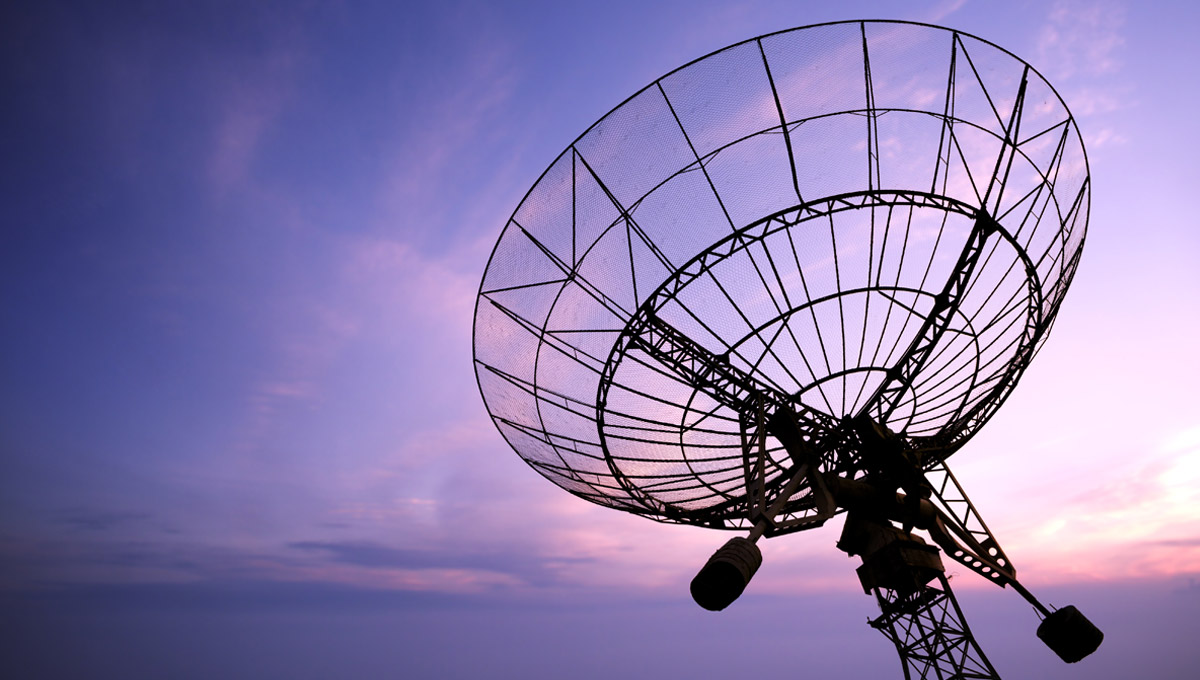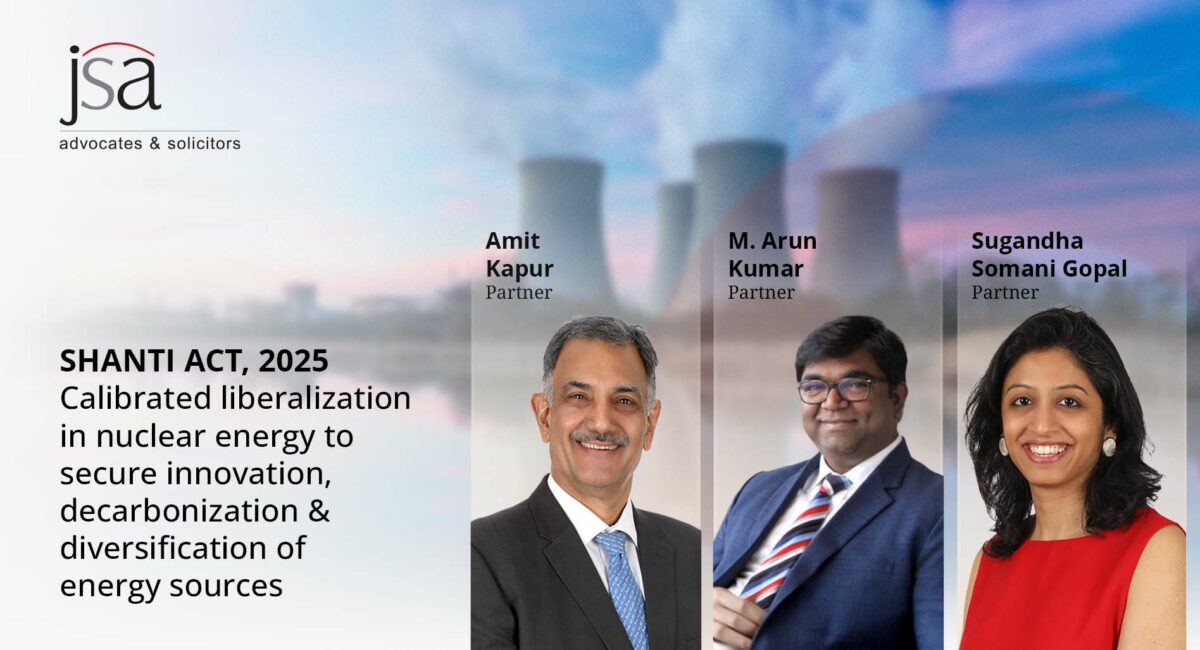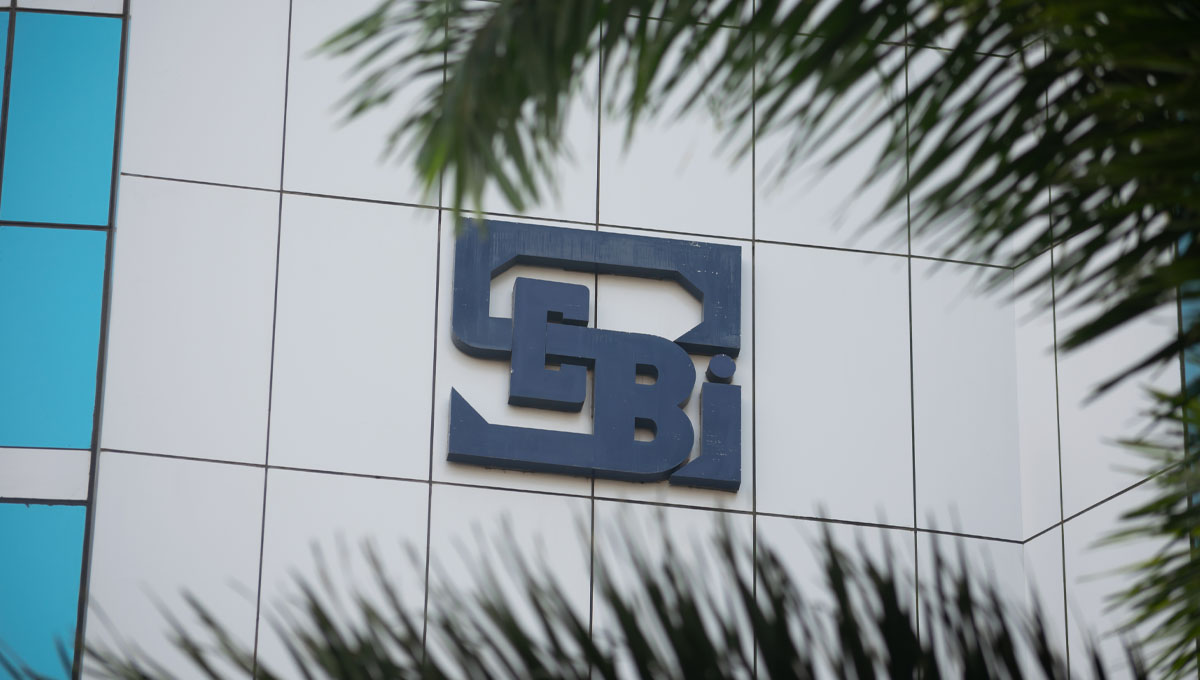Please click here to download the Newsletter as a PDF.
Automation of process of submission of Performance Monitoring Report of various services by Telecom Service Providers
On August 2, 2024, the Telecom Regulatory Authority of India (“TRAI”) issued ‘The Standards of Quality of Service of Access (Wireline and Wireless) and Broadband (Wireline and Wireless) Service Regulations, 2024’.These regulations mandated all Telecom Service Providers (“TSP”) to create or to upgrade their systems within 6 (six) months of the notification of these regulations, for the purposes of collection of primary data, the storage and processing of data, and the generation and submission of Performance Monitoring Reports (“PMR”) to TRAI.
To streamline this process and improve ease of doing business for TSPs, TRAI issued a notification dated April 17, 2025, introducing a digital and paperless process for submission of PMRs by TSPs. For TSPs providing wireless access services, submissions have been automated through Application Programmable Interfaces due to high volume data. For wireline access and broadband services, a user-friendly interface is available on the PMR portal. The automation of PMR submission aims to reduce human errors in the reports, simplify the submission process and reduce the effort required by TSPs for the accurate and timely submission of PMRs. The PMRs for the quarter ending March 2025 were submitted through the digital portal by TSPs.
Recommendations on the Issues Related to Critical Services in the M2M Sector, and the Transfer of Ownership of M2M SIMs
On April 22, 2025, TRAI issued the ‘Recommendations on the Issues Related to Critical Services in the M2M Sector, and the Transfer of Ownership of M2M SIMs’ (“M2M Critical Services Recommendations”) which cover the Machine-to-Machine (“M2M”) and Internet of Things (“IoT”) regulatory frameworks in India, with a specific focus on critical services classification and the transfer of Subscriber Identity Modules (“SIM”). The M2M Critical Services Recommendations broadly state the following:
- a service or application qualifies as a ‘critical IoT service’ if the service or application demands ultra-reliable, low-latency M2M connectivity with very high availability and if any disruption of the M2M connectivity used for delivering the service or application will have a debilitating impact on national security, economy, public health or public safety;
- instead of classifying an entire domain or sector as a critical IoT sector, specific IoT services or applications within these sectors may be classified as critical IoT services. Such classification must be carried out by the relevant ministry and regulatory body concerned in consultation with the Department of Telecommunications (“DoT”). All IoT services will be treated as non-critical IoT services unless they are specifically identified and notified as a critical IoT service;
- the DoT is to develop an institutional mechanism to assist concerned ministries and regulatory bodies in classifying critical IoT services or applications. Any wireless or wired M2M communication technology may be used for provision of critical IoT services if it meets the prescribed service performance benchmarks. The choice for M2M communication technologies may be exercised based on commercial and technical considerations;
- the M2M communication modules embedded in IoT devices used in the critical sectors identified by the National Critical Information Infrastructure Protection Centre, Government of India, should be notified under the framework of the Mandatory Testing and Certification of Telecommunication Equipment (“MTCTE”) in a phased manner. IoT devices deployed in the remaining non-critical sectors may be notified under the MTCTE at a later stage;
- the DoT must establish a framework for the transfer of M2M Service Provider (“M2MSP”) registrations in cases such as mergers, demergers and acquisitions of M2MSP entities;
- the DoT is to introduce enabling provisions for the transfer for ownership of M2M SIMs from one M2MSP registration holder to another provided the transferor entity furnishes a no objection certificate for the M2M SIMs and the transferee entity provides an undertaking stating that they are taking over all responsibilities associated with the M2M SIMS to the concerned access service providers. Upon the transfer of M2M SIMs, the concerned access service providers must amend the name of the owner of the M2M SIMs in its subscriber database; and
- the transferee M2MSP entities must maintain the updated details of the physical custodians of machines fitted with M2M SIMs obtained from the transferor entities.
Meeting of Joint Committee of Regulators
On April 25, 2025, the TRAI convened a meeting of the Joint Committee of Regulators (“JCoR”) in New Delhi, which was attended by representatives from the Reserve Bank of India (“RBI”), the Insurance Regulatory Development Authority of India, the Pension Fund Regulatory and Development Authority, the Securities Exchange Board of India, the Ministry of Civil Aviation, the Ministry of Electronics and Information Technology (“MeitY”), and special invitees from the DoT and the Ministry of Home Affairs (“MHA”) to address cross-sectoral regulatory challenges. Some of the important matters discussed in the JCoR meeting are as follows:
- the modalities for implementation of 1600 (one thousand six hundred) number series allocated for making transactional and service voice calls by government entities or entities from the financial sector. The members of the JCoRagreed to take up the issues relating to implementation within their respective jurisdictions to ensure the timely implementation of the 1600 (one thousand six hundred) number series. The Cellular Operators Association of India also presented various solutions before the JCoR to ensure the presentation of the Calling Line Identification for 1600 (one thousand six hundred) number series for all recipients across all telecom service providers and licensed service areas in the country;
- the modalities for onboarding of senders of commercial communication on Digital Consent Acquisition (“DCA”) The members of the JCoR agreed to engage with the principal entities within their jurisdiction to onboard them on the DCA platform;
- the Indian Cybercrime Coordination Centre under the MHA discussed various measures for countering fraudulent communication and the ‘Digital Arrest’ scams. Measures such as deletion of unused message headers and content templates to avoid their misuse by spammers, prompt action on fraudulent Short Message Service (“SMS”) headers and blocking of mobile numbers and International Mobile Equipment Identity (“IMEI”) numbers used for sending fraudulent messages; and
- the members of the JCoR discussed the issues of spams and scams conducted through Over-The-Top and Rich Communication Services communication platforms. MeitY is to engage with all stakeholders to frame measures analogous to those used for conventional telecommunication.
Instructions related to security aspects in Chapter XII of the Unified License Agreement for the provision of GMPCS service
On May 5, 2025, the DoT issued additional Instructions relating to the security aspects under Chapter XII of the Unified License (“UL”) for the provision of Global Mobile Personal Communications by Satellite (“GMPCS”) service (“Instructions”). The Instructions broadly state the following:
- licensees under UL providing GMPCS service (“GMPCS Licensees”) are required to obtain security clearance for specific gateway/hub locations within India and ensure compliance with requirements relating to monitoring/interception facilities/equipment requirements. Access for monitoring and lawful interception must be provided as per the UL licensing conditions at the gateway/Point of Presence (“PoP”)/Network Control and Monitoring Center (“NCMC”) or any equivalent facility. The lawful interception system and lawful interception monitoring systems must be integrated with the centralised monitoring system/integrated monitoring system;
- the GMPCS Licensees must demonstrate their system capabilities regarding security aspects, including monitoring, to the licensor, i.e., the DoT, prior to commencement of operations in India. Furthermore, essential functionalities such as lawful interception facilities, monitoring/control facility of User Terminals (“UT”), user data traffic routing, control of equipment in gateway routing data etc. of the NCMC or equivalent facilities area to be located in India;
- GMPCS Licensees must be able to implement service restrictions/denial to any individual or group of subscribers or certain geographical areas during hostilities or otherwise informed by the designated Law Enforcement Agencies (“LEA”)/security agencies/licensor. Additionally, GMPCS Licensees must ensure accuracy of geofencing in case of debarred areas and reshape footprint pattern near borders to avoid spillovers;
- GMPCS Licensees must provide services in accordance with the survey of the Indian maps. In case of sensitive areas and border areas, it is required to have a selective provision or denial facility to provide services only to authorised/whitelisted UTs as intimated by the designated LEAs/security agencies/licensor. The special monitoring zones along territorial borders and coastal borders, covering the exclusive economic zones, must be demarcated for monitoring of user activities by the designated LEAs and security agencies;
- the Instructions specify additional details that GMPCS Licensees must include when maintaining Call Detail Records and Internet Protocol Detail Records. GMPCS Licensees are also required to ensure that websites blocked in India are also blocked through GMPCS services. GMPCS Licensees must facilitate collection of metadata by the Telecom Security Operation Centre under the DoT;
- no UT should be permitted to access the network from outside the geo-fenced coverage area through the gateways situated outside India, and UTs registered in India are not allowed to latch onto any other gateway located outside the Indian territory. Fixed satellite subscriber/UTs not subscribed to any portability or mobile facility must be suitably bound to geolocations where subscribed services are granted by the GMPCS Licensees, however, subscriber level attempts to relocate and transport the UT to other locations are not permitted. All requests for relocation will be addressed to the GMPCS Licensees and granted via proper authorisation. GMPCS Licensees also have the authority to immediately block any UT if identified as engaging in malicious activities;
- the Instructions lay down that UTs operating within the Indian territory must be registered in India, and any unregistered devices or foreign devices will be allowed for use within the geofenced area of the Indian territory only after due authentication and registration. Real time information, including location data, of foreign unregistered UTs hooking on to the network from within the Indian territory must be provided to the designated LEAs and security agencies. GMPCS Licensees must ensure that no location spoofing devices are incorporated with UTs, which may allow them to hide their actual locations;
- in case GMPCS Licensees require remote access from outside the Indian territory for the operation of gateways/ PoP, they have to ensure that the provisioning of remote access from abroad complies with the legal and technical requirements for remote access guidelines issued by the Licensor;
- GMPCS Licensees must submit undertakings stating that they will not copy or decrypt Indian telecom data outside the territory of India. They must also provide real time monitoring to ensure that no user traffic originating from or destines to reach India is being routed through gateways or PoP located outside the Indian territory. Furthermore, Indian user traffic is not to be routed through gateways or PoP located abroad or through any space system, which is not a part of the satellite/constellation used for providing service;
- GMPCS Licensees must clarify on Inter Satellite Communication Links (“ISCL”) capability and ensure that no traffic is routed via outside gateways through ISCL during failure of Indian gateways or as a part of optimisation. Furthermore, Indian user traffic is not to be mirrored to any system or server located abroad through ISCL or any other means. GMPCS Licensees must take prior approval in case of change in network architecture including number of satellites, orbits, or any other configuration related to ground and space segments;
- the Instructions lay down the additional information GPMCS Licensees must furnish if requested for by the Licensor. The GMPCS Licensees will coordinate with the Department of Space regarding the non-interference with Geo-Stationary Orbit (“GSO”) satellites including strategic satellites, and they will strictly follow Article 22 of the International Telecommunication Union Radio Regulations (“ITU-RR”) regarding power flux density limits;
- user traffic is not to bypass Indian gateway and must be routed through the Indian gateway under all circumstances. Direct communication between UTs through one or more satellites are not to be permitted. GMPCS Licensees must ensure that data centres/PoP is based within the geographical boundary of India and must further ensure to provide Domain Name System resolution within the geographical boundary of India;
- from a security perspective, the GMPCS Licensees will seek separate clearance for voice service and data service, and for fixed location service (no mobility/limited mobility) and mobility based services;
- GMPCS Licensees will submit to the Licensor a year-wise phased manufacturing program aiming at the indigenisation of at least 20% of their ground segment of the satellite network that is established, at the end of 5 (five) years post the launch of commercial operations;
- the Instructions consist of specific security instructions applicable to land mobility terminals which state that land mobility terminals will report location at every 2.6 (two point six) kilometres moved or 1 (one) minute duration, whichever is lesser. GMPCS Licensees may be required to demonstrate their capability for real time location tracking of UTs under the existing UL licensing terms and conditions. The network must be equipped with the ability to stop service when the UT moves from an authorised area to a barred area; and
- in case of any conflict between the terms and conditions laid down in the UL and these Instructions, the Instructions will prevail.
Recommendations on Terms and Conditions for the Assignment of Spectrum for Certain Satellite-Based Commercial Communication Services
On May 9, 2025, TRAI issued its Recommendations on the ‘Terms and Conditions for the Assignment of Spectrum for Certain Satellite-Based Commercial Communication Services’ (“SBCCS Recommendations”). These SBCCS Recommendations elaborate upon the suggested terms and conditions for the assignment of spectrum for certain satellite-based commercial communication services and broadly state the following:
- subject to alignment with the National Frequency Allocation Plan, 2022, the SBCCS Recommendations suggest allocating Ku, Ka and Q/V bands for user and feeder links for Non-Geostationary Orbit (“NGSO”) based Fixed Satellite Service (“FSS”) used for data communication and internet service. For GSO/NGSO-based Mobile Satellite Services (“MSS”), the use of L and S bands for user links, and C, Ku, Ka and Q/V bands for feeder links should be considered;
- the frequency spectrum must be assigned for NGSO-based FSS and GSO/NGSO-based MSS for 5 (five) years, further extendable up to 2 (two) years. The pricing and conditions remain valid for 5 (five) years from the date of policy notification and is extendable by 2 (two) years. Changes beyond the initial 5 (five) years will apply to all authorised entities, including existing entities;
- the ITU-RR will apply to authorised entities to control interference. Also, the ITU framework for coordination is to apply among NGSO-based satellite systems;
- coordination in good faith must be ensured for higher frequency bands such as C, Ku, Ka, and Q/V bands that are assigned on a shared basis. The Central Government is required to issue a binding framework for spectrum sharing, as and when necessary. The necessity of such framework will be examined by the Central Government alongside the Telecommunication Engineering Centre (“TEC”), including the condition on maximum equivalent power flux density and for splitting of spectrum if necessary;
- for establishment and operation of Satellite Earth Station Gateways, good faith in coordination must be mandated between authorised entities. The Central Government may prescribe the coordination distance between 2 (two) gateways (GSO-NGSO and NGSO-NGSO) operating in the same frequency. The DoT and TEC will assess and issue guidelines prescribing coordination distance if necessary;
- Article 21 of the ITU-RR for terrestrial and space services sharing frequency bands above 1 GHz will be applicable. The ITU-RR and Resolution 243 of the World Radiocommunication Conference–19 will be applied to ensure the coexistence between satellite services and International Mobile Telephony (“IMT”). The gateways in uninhabited or remote areas must be prescribed in IMT bands (42.5–43.5 GHz) with DoT-defined exclusion zones, and portal-based automated feasibility check using IMT base station and gateway coordinates;
- the Satellite Earth Station Gateways must be installed and commissioned within 12 (twelve) months from the date of permission granted by the Central Government;
- the right to use of frequency spectrum may be surrendered before the expiry of the validity period by providing 30 (thirty) days’ notice to the Central Government and TRAI or by giving a notice of 60 (sixty) days in case such surrender may result in a disruption or closure of services for consumers. A reasonable processing fee may be charged by the DoT;
- the spectrum must be assigned within a period of 30 (thirty) days from the date of application, subject to the in-principle clearance of satellite network given by the Central Government. Any objections will be communicated to such authorised entity within the same period;
- the Central Government must explore the possibility of assigning frequency spectrum on a block basis rather than on a carrier-by-carrier basis;
- t levying of spectrum usage charges as a percentage of Adjusted Gross Revenue (“AGR”) for NGSO-based FSS for data communication and internet services, and GSO/NGSO-based MSS for voice, text, data, and internet services. The spectrum charging mechanism will be valid for 5 (five) years, extendable by 2 (two) years;
- spectrum charges for GSO-based FSS are suggested to be levied at 4% of AGR. Further, spectrum charges for NGSO-based FSS are suggested to be levied at 4% of AGR, along with an additional per subscriber charge of INR 500 (Indian Rupees five hundred) per annum in urban areas, while rural and remote areas are exempted from additional charge;
- for targeted subscribers in unserved/underserved regions of rural and remote areas, the Central Government may consider subsidy for each NGSO-based FSS user terminal. The subsidy may be disbursed either as a lump sum payment or in installments. The subsidy may be given through direct benefit transfer to eligible subscribers or as direct payment to NGSO-based FSS through the Digital Bharat Nidhi fund. The amount of the subsidy may be subject to periodic review;
- spectrum charges for GSO/NGSO-based MSS will be levied at 4% of AGR. For GSO/NGSO-based FSS and MSS, an Annual Minimum Spectrum Charges will be applicable at INR 3,500 (Indian Rupees three thousand five hundred) per MHz; and
- payment of annual spectrum charges for GSO/ NGSO-based FSS and MSS must be paid in advance for every quarter, within 15 (fifteen) days of commencement of each quarter. The minimum charges must be paid in advance at time of assignment of spectrum and at the beginning of each year. The quarterly/annual adjustment of the payments due will be made with the minimum spectrum charge for the particular year only.
Draft Use of Low Power and Very Low Power Wireless Access System including Radio Local Area Network in Lower 6 GHz band (Exemption from Licensing Requirement) Rules, 2025
On May 19, 2025, the DoT, notified the draft ‘Use of Low Power and Very Low Power Wireless Access System including Radio Local Area Network in Lower 6 GHz band (Exemption from Licensing Requirement) Rules, 2025’ (“Draft Exemption from Licensing Rules”) under the Telecommunications Act, 2023 (“Telecom Act”) for comments of stakeholders by June 15, 2025. The salient features of the Draft Exemption from Licensing Rules are as below:
- no authorisation or frequency assignment required for Low Power Indoor (“LPI”) and Very Low Power Outdoor (“VLPO”) wireless devices/radio local area networks operating on the frequency band 5925-6425 MHz on a non-interference, non-protection, and shared basis, subject to technical conditions;
- LPI devices can use up to 5 dBm/MHz power spectral density, 30 dBm equivalent isotropic radiated power (“i.r.p”), with a bandwidth up to 320 MHz and out-of-band (“OOB”) emissions limited to −27 dBm/MHz. VLPO devices are restricted to –5 dBm/MHz power spectral density and 14 dBm e.i.r.p., within the same bandwidth and OOB limit;
- use of the lower 6 GHz band is prohibited on oil platforms, indoor use on land vehicles, boats and aircraft (except when flying above 10,000 (ten thousand) feet), and communications with and control of drones and unmanned aerial systems;
- ensure emissions from transmitters operating in the 5925-6425 MHz band keep any emissions outside the band range within −27 dBm/MHz. The transmitter must reduce its signal strength by 20 dB just outside the channel (1 MHz from the edge), by 28 dB at one full channel bandwidth away from the center, and by 40 dB at 1 ½ (one and a half) times the channel bandwidth from the center;
- emission measurement must use at least 1 MHz resolution bandwidth. A smaller resolution is allowed near the band edge, but total power over 1 MHz must still be shown. The nominal carrier frequency will be adjusted as close to the upper and lower frequency band edges to measure the emission limits;
- if a licensed system reports harmful interference from an unlicensed device operating under the Draft Exemption from Licensing Rules, the authority will direct the unlicensed user to take steps like relocating equipment, reducing power, or changing antenna. If not resolved, the authority will recommend discontinuation of such use, after giving the user a reasonable opportunity to respond; and
- wireless devices must have built-in antennas, conform to emission bandwidth and technical limits and the equipment type must be approved by the Central Government. Safety standards must comply with international or national norms like ITU, European Telecommunications Standards Institute, American National Standards Institute, Bureau of Indian Standards, or International Commission on Non-Ionizing Radiation Protection.
Telecommunications (Standards, Conformity Assessment and Certification) Rules, 2025
On May 16, 2025, the DoT notified the Telecommunications (Standards, Conformity Assessment and Certification) Rules, 2025 (“SCAC Rules”) under the Telecom Act. The SCAC Rules supersede Rules 528 to 537 of the Indian Telegraph Rules, 1951, which dealt with the testing and certification of telegraph equipment, except for the terms and conditions of existing standards, essential requirements, interface requirements, security assurance requirements, specifications, testing requirements or conformity assessment, or exemptions, issued by the Central Government prior prior to the effective date of the SIAC Rules. Such previously issued terms and conditions will continue to remain in force until specifically superseded by the Central Government. The salient features of the SCAC Rules are as below:
- the SCAC Rules apply to all telecom equipment manufactured, sold, imported or used in India, but exempt telecom equipment imported into India for the purpose of R&D or personal use;
- the SCAC Rules mandate formulation, notification, review and enforcement of standards and procedures by the TEC and the National Centre for Communication Security both referred to as the Appropriate Authority under the SCAC Rules. Amended or revised standards will be notified and operate concurrently to prior existing standard for a transitional period;
- a periodic review of the notified standards and conformity assessment measures is mandatory every five (5) years;
- a laboratory in India or in any other country, will be recognised as a Conformity Assessment Body (“CAB”) by the Appropriate Authority for carrying out conformity assessment of standards. A list of approved CABs will be published on a designated digital portal;
- a person to whom a notified standard applies must ensure compliance with the conformity assessment measures to obtain a Certificate of Conformity Assessment (“COCA”). The certificate is issued by the Appropriate Authority or a certification body after assessment for conformity assessment in consonance with the specified timelines and procedure. The certificate will have a determined validity period and must be renewed at the applicant’s cost;
- the use of telecom equipment by a user of telecom services without a valid COCA will warrant a notice by an authorised entity or licensee seeking the discontinuance by the user of the telecom equipment within seven (7) days of issue of notice. Non-adherence to the notice for discontinuance of use of uncertified telecom equipment will lead to the suspension of the telecom service to the telecom network;
- designated officers will conduct periodic inspections to ensure compliance and telecom businesses must cooperate and provide access and information for purpose of inspection and monitoring;
- if information is obtained that a telecom equipment to which a standard applies does not possess a valid COCA, the person in possession of the equipment is to cease from offering the equipment for sale or distribution or for use. Strict legal proceedings are preferred against contravention of the SCAC Rules including seizure or destruction of the non-certified equipment;
- the Government will notify digital platforms to publish standards and conformity assessment, certification procedures, fees, compliance procedures, non-conformity notices and enforcement orders or directions.
Assignment of the Microwave Spectrum in 6 GHz (lower), 7 GHz, 13 GHz, 15 GHz, 18 GHz, 21 GHz Bands, E-Band, and V-Band
On May 28, 2025, the TRAI released a consultation paper on ‘Assignment of the Microwave Spectrum in 6 GHz (lower), 7 GHz, 13 GHz, 15 GHz, 18 GHz, 21 GHz Bands, E-Band, and V-Band’. The consultation paper sought the views of the stakeholders broadly on the following:
- whether the spectrum in traditional microwave backhaul bands (6 GHz (lower), 7 GHz, 13 GHz, 15 GHz, 18 GHz, and 21 GHz) should be assigned for radio backhaul purposes based on the level of demand and what is the specific commercial telecommunication services requiring such allocation;
- whether the spectrum in traditional microwave backhaul bands should be assigned for various commercial telecommunication services using block-based, point-to-point link-based or other methods, and if different methods are adopted, what quantum of spectrum in each of the bands should be earmarked for point-to-point link-based assignments;
- whether the usage of the 7 GHz and 15 GHz microwave backhaul bands should be reviewed at this stage in light of their consideration for IMT in World Radiocommunications Conference 2027 (“WRC-27”), and if so, what policy framework should be adopted for their assignment to address potential outcomes of WRC-27;
- whether certain quantum of spectrum in traditional microwave backhaul bands should be earmarked to fulfill point-to-point connectivity requirements of captive (non-commercial/non-TSP) users, and if so, what should be the appropriate bands, assignment terms and conditions including carrier size, aggregation, ceilings, validity, renewal, roll-out, and surrender of spectrum, and whether minimum link lengths should be prescribed for both commercial TSPs and captive users, or if no earmarking is done, how such connectivity requirements should be met;
- whether in light of the Government’s decision to delicense the 6 GHz (lower) band (5.925–6.425 GHz) for low power applications, specific protective measures need to be prescribed to safeguard incumbent users such as Fixed Microwave (backhaul) Services and Fixed FSS operating in the same band;
- whether there is significant demand for spectrum in the E-band (71–76 GHz, 81–86 GHz) and V-band (57–64/66 GHz) for each service or usage including Backhaul, Access, and Integrated Access and Backhaul (“IAB”) with supporting justification including the availability of technical standards and ecosystem;
- whether it is feasible to allow low power indoor consumer device-to-device usage on a license-exempt basis in the V-band alongside telecom service provider use for terrestrial networks, and if so, whether such use should apply to the entire V-band or a specific portion, what frequency range should be adopted (57–64 GHz or 57–66 GHz), and what the appropriate carrier size, indoor usage, and technical parameters must be;
- whether spectrum charges for the 6 (lower)/7/13/15/18/21 GHz bands assigned for radio backhaul in commercial telecom services should be levied as a percentage of AGR, on a per link/per carrier or per MHz basis, or via an alternative mechanism depending on whether the assignment is on a point-to-point link basis or block basis for the entire licensed service area;
- whether the valuation of spectrum in the 6 (lower)/7/13/15/18/21 GHz bands, if assigned via auction for last mile connectivity in commercial telecom services, should be based on auction-determined prices of other bands using spectral efficiency factors or on international auction prices for similar bands and services, and if so, whether such prices should be normalized to account for cross-country differences; and
- whether the spectrum charges for 6 (lower), 7, 13, 15, 18, and 21 GHz bands for non-commercial/captive backhaul use should continue to be levied as per the formula specified by the DoT or replaced with an alternative charging mechanism;
The stakeholders are required to provide their comments by July 2, 2025, and counter comments by July 16, 2025.
Amendment to the Telecommunication Tariff Order, 1999
On June 16, 2025, TRAI issued the Telecommunication Tariff (71st Amendment) Order, 2025 (“Tariff 71st amendment order”), prescribing tariffs for retail broadband connectivity offered to Public Data Offices (“PDO”) under the PM-WANI scheme.
Under the Tariff 71st amendment order, all TSPs and Internet Service Providers (“ISP”) offering retail Fiber to the Home (“FTTH”) broadband plans up to 200 Mbps are required to extend the same plans to PDOs at tariffs not exceeding twice the rate applicable to retail subscribers. This move aims to address the low proliferation of PM-WANI hotspots, which has been attributed, in part, to high backhaul costs imposed on PDOs through commercial Internet leased line arrangements.
TRAI observed that small-scale PDOs such as local retailers, kirana stores, and tea stalls often cannot afford enterprise-level connectivity. By linking PDO tariffs to retail FTTH rates, TRAI intends to enable affordable public Wi-Fi services and boost last-mile digital access.
The order comes after a public consultation process and the September 2024 amendment to the PM-WANI framework by the DoT, which removed the requirement for PDOs to enter into commercial agreements with TSPs. TRAI may review the ceiling in future based on evolving data usage patterns.
TRAI launches Pilot for Digital Consent Management in Banking
On June 16, 2025, TRAI announced the launch of a pilot project on digital consent management, in coordination with the RBI and select banks, aimed at addressing the growing issue of spam communications under the Telecom Commercial Communications Customer Preference Regulations, 2018.
The pilot, running under a regulatory sandbox framework, will test an enhanced Consent Registration Function wherein banks will acquire verifiable digital consent from consumers before sending commercial messages, and these will be stored in a secure, interoperable digital registry maintained by TSPs.
Given the sensitivity of financial data and increasing incidents of spam-induced fraud, TRAI has prioritised the banking sector for initial implementation. TRAI emphasised that successful implementation could pave the way for a sector-wide rollout, enhancing transparency and consumer protection in commercial communications.
Advisory on adoption of .IN domains and IST synchronisation
On June 18, 2025, the DoT issued a notification to licensees licensed with the internet service authorisation, on adoption of .IN Domains for critical and essential services and synchronise Information and Communication Technology systems’ clocks with the Network Time Protocol (“NTP”) servers of National Information Centre or National Physical Laboratory, in reference to draft Legal Meteorology (Indian Standard Time) Rules published on January 15, 2025 (“Draft Metrology Rules”).
The DoT has advised the licensees licensed with the internet service authorisation, that all websites and web-related services for critical and essential services should be operated under the .IN domain. The relevant .IN domain policy is available at https://www.registry.in/policies.
Further, under the Draft Metrology Rules, issued under the Legal Metrology Act, 2009, the Government of India mandates synchronisation of all time-referenced systems with Indian Standard Time (“IST”), which is based on UTC+5:30 as realised by the CSIR-National Physical Laboratory (“UTC-NPLI”). The following conditions are relevant in this regard:
- Mandatory use of IST: Rules 5, 6 and 7 of the Draft Metrology Rules provide that all legal, administrative, commercial, and financial activities must reference IST, with explicit prohibitions on using alternate time zones for official or commercial purposes.
- Display and synchronisation requirements: Rule 8 of the Draft Metrology Rules provides that Government offices and public institutions must display IST, using reliable sources such as NTP or Precision Time Protocol (“PTP”). The Draft Metrology Rules also provide for terrestrial-based time references and fallback systems to counter Global Navigation Satellite System (“GNSS”) spoofing/jamming.
- Cybersecurity compliance:Rule 9 of the Draft Metrology Rules mandates the time-synchronisation system to ensure reliability, availability, and robustness, incorporating adequate cybersecurity measures to mitigate the risk of malicious attacks. In addition to the Navigation with Indian Constellation (“NavIC”) time reference signal, is required to utilise terrestrial-based time distribution from Regional Reference Standard Laboratories (“RRSL”). The system may rely on alternate reference sources in the event of jamming, spoofing of GNSS or NavIC signals, or any cyber-attack affecting the primary time reference.
Clarification on Mandatory Know Your Customer Compliance for Internet Telephony Services
The DoT has issued a notification dated June 16, 2025, to all Unified Access Service (“UAS”)/UL/Unified License(Virtual Network Operator) (“VNO”) license holders with Access Service Authorisation (“ASA”), clarifying that all extant Know Your Customer (“KYC”) instructions, originally issued for cellular mobile services, will apply mutatis mutandis to all licensees holding ASA and providing Internet Telephony services using mobile numbering series. The terms such as SIM card, International Mobile Subscriber Identity (“IMSI”) etc., as used in the extant KYC instructions, are required to be applied where contextually relevant. Additionally, the notification prescribes that relevant license conditions related to business connections must be followed.
The DoT has issued the notification after it came to the DoT’s attention that certain licensees were offering Internet Telephony services under the “Business Connection” category using mobile numbering series, without adhering to the mandatory end-user KYC procedures under existing instructions prescribed by DoT in its notification dated August 31, 2023. The licensees contended that the existing KYC instructions were applicable only to those licensees who are providing cellular mobile services.
Further, the notification stipulates that any deviation or non-compliance observed post the issuance of the notification will be treated as a violation of the license agreement attracting penal action. The DoT directed that all Internet Telephony connection being offered are required to be brought into compliance with the existing KYC requirements within a period of 90 (ninety) days from the date of issuance of the notification
Directions on handling of SIM Swap/replacement requests pertaining to the end users of business connections
The DoT has issued a directive dated June 23, 2025, to all UAS License and UL holders with ASA regarding the handling of SIM swap/replacement requests concerning end users of business connections. Previously, on August 31, 2023, DoT’s instructions introduced a mandatory KYC procedure for all business connections, replacing the term ‘bulk connections’. Further, it discontinued the existing SIM swap and replacement process and mandated the adoption of either electronic KYC or Digital KYC mechanisms in the process. Further, under the revised procedure given in the notification dated August 31, 2023, all SIM swap and replacement requests must involve the proper collection and storage of Customer Application Forms (“CAF”), subscriber photographs, and all associated data. These documents are required to be securely preserved along with the original subscriber records. These instructions that were reiterated through the DoT’s letter dated October 13, 2023, came into effect from December 1, 2023.
This directive observes that certain licensees were not adhering to the due procedure outlined in the instructions dated August 31, 2023, for SIM swap/replacement. Therefore, through this directive, the DoT has directed the licensees to strictly comply with the licensing requirements and instructions related to KYC, ensuring full implementation both in form and in substance.
Embedded SIM regulations for Machine-to-Machine communications in India liberalised; streamlining profile management and Subscription Manager – Secure Routing operations
The DoT has issued Instructions on the Usage of Embedded SIM for M2M Communications dated June 26, 2025 (“M2M Instructions 2025”) that aim to eliminate the need for physical access with the use of e-SIM offering flexibility and efficiency, reduced operational cost of handling, transporting SIMs and provide faster deployment and scalability. With the emphasis on the Global System for Mobile Communications Association specification, a globally recognised secure framework is ensured within a defined ecosystem. With the various telcos permitted to own/manage the SM-SR, the DoT fosters competition among providers. Mandatory SM-SR switching upon M2MSP request, ensures greater flexibility and choice for M2MSPs and ultimately, their customers. This prevents vendor lock-in and promotes a more dynamic market.
For further details, please refer to the JSA Prism of July 1, 2025.
Definition of domestic and international SMS
The DoT, vide notification dated June 19, 2025, has defined domestic traffic and SMS as well as international SMS and traffic. Domestic traffic is defined as communication that originates and terminates entirely within India’s territorial boundaries, while a domestic SMS is a message transmitted and delivered solely through domestic traffic channels. International traffic is defined as traffic originating in one country and terminating in another country, where one of the countries is India. International SMS message is defined as SMS delivered using international traffic.
The DoT further clarified that an incoming Application-to-Person (“A2P”) SMS is considered international if its generation, transmission, or reception involves any foreign means and all outgoing international traffic from India, including SMS messages, must be routed through an International Long Distance (“ILD”) gateway. Conversely, A2P messages from domestic telemarketers submitted to access service providers in India should not use ILD gateways. Additionally, all incoming international messages, whether Person to Person or A2P delivered through foreign Public Switched Telephone Networks or Public Land Mobile Networks must be routed via ILD gateways into India.
DoT notification on Captive Non-Public Networks
DoT has issued an office Memorandum (“OM”) dated June 30, 2025, in furtherance of the guidelines for the establishment of Captive Non-Public Networks (“CNPN”). These guidelines allow enterprises to set up their own captive, private 4G/5G networks by either utilizing the spectrum assigned to the TSP or through the direct assignment of spectrum, thereby ensuring secure, high-reliability, and low-latency connectivity tailored to specific operational requirements. In the OM, the DoT has announced the launch of a new demand survey to identify suitable frequency bands for the direct assignment of spectrum to CNPNs towards accelerating the deployment of private 4G and 5G networks for enterprises across India. Recognizing the maturity of 5G technology, the evolving device ecosystem in International Mobile Telecommunications bands, and growing interest from system integrators, the DoT has opened a dedicated module on its Saral Sanchar portal (https://saralsanchar.gov.in).
- Who can participate: Enterprises with a net worth exceeding INR100 Crores interested in establishing CNPNs with directly assigned spectrum, and System Integrators keen on setting up such networks for these enterprises, are invited to participate.
- Purpose: The survey aims to assess the current demand and identify the most appropriate frequency bands for direct spectrum allocation, overcoming previous challenges related to device ecosystem availability.
- Timeline: The portal will accept submissions from July 1, 2025, to July 31, 2025.
- Eligibility: Criteria for direct spectrum assignment will continue to be governed by the CNPN guidelines issued on June 27, 2022.
Vodafone India Ltd. and Anr. vs Union of India
The petitioners, Vodafone India Limited, Bharti Airtel Limited and Tata Teleservices Limited filed writ petitions before the Supreme Court of India (“Supreme Court”) under Article 32 of the Indian Constitution, pursuant to the decision of the Supreme Court dated October 24, 2019 (“AGR Judgment”) which had decided the scope of AGR in the telecom license for the purpose of calculating the license fee payable to the Government, resulting in substantial financial implications for the telecom operators. In the present writ petitions, the petitioners sought directions from the Supreme Court against the respondent, Union of India: (a) from seeking payment of interest for the 10 (ten) year period of payment of AGR dues in instalments which the petitioners alleged as an illegal claim of interest on interest; (b) to act fairly and in public interest; and (c) restrain the respondent from insisting on payment of interest, penalty and interest on penalty on the AGR dues.
While dismissing the petitions vide order dated May 19, 2025, the court expressed disappointment on the filing of the Article 32 petitions on the same subject matter after the curative petitions, seeking relief in the AGR Judgment were dismissed by the Supreme Court on August 30, 2024, as misconceived and the decision in the AGR Judgment was upheld.
DoT notifies revised Call Detail Record and Exchange Detail Record formats for UL/UAS license, ILD and internet telephony
The DoT issued notifications dated June 17, 2025, and notified the requirement to implement revised Call Detail Records (“CDR”) format having 22 fields for UL and UASL licensees and separately a revised CDR and Exchange Details Record (“EDR”) formats for ILD calls and internet telephony calls.
Draft Telecommunications (Telecom Cyber Security) Amendment Rules, 2025
The DoT notified the draft Telecommunications Amendment Rules, 2025 (“Draft Telecom Cyber Security Rules”) dated June 24, 2025, proposing a series of amendments to the existing Telecommunications (Telecom Cyber Security) Rules, 2024. In effect, these proposed amendments aim to build a more secure telecom infrastructure by closing existing regulatory gaps and introducing robust identity and equipment verification frameworks.
The Draft Telecom Cyber Security Rules introduce a new category of entities beyond licensees and authorised entities called Telecommunication Identifier User Entity (“TIUE”). This term applies to entities that use telecom identifiers either to identify customers or to deliver services.
The Draft Telecom Cyber Security Rules also propose the creation of a Mobile Number Validation Platform by the Central Government or its agent. This platform will function as a centralised digital system for verifying whether a telecom identifier corresponds to a legitimate record held by a licensed provider or authorised entity. A fee structure is suggested to support this platform wherein government requests will be free or minimally charged, while private entities must pay a nominal fee per validation.
The Draft Telecom Cyber Security Rules also grant the Central Government the authority to immediately suspend telecom identifiers in public interest. This power extends not just to licensees but also to TIUEs. In more severe cases, such as those involving fraud or national security, identifiers may be permanently disconnected or barred.
Further, the Draft Telecom Cyber Security Rules address regulation concerning telecom devices and their IMEI numbers. Manufacturers are prohibited from reassigning used IMEIs to new devices and must cooperate in the investigation of tampered equipment. A central database will be maintained to track blacklisted or tampered IMEIs. Any individual or entity wishing to buy or sell used telecom devices must validate the device’s IMEI against this database via a dedicated portal, with access subject to a nominal fee of INR 10 (Indian Rupees ten) per IMEI, to ensure proper compliance.
The public has been invited to submit objections or suggestions to the Draft Telecom Cyber Security Rules within 30 (thirty) days of the publication in the official gazette.
Gujarat SpaceTech Policy 2025-2030
On April 16, 2025, the Department of Science and Technology, Government of Gujarat, approved the Gujarat SpaceTech Policy 2025 – 2030 (“SpaceTech Policy”). The SpaceTech Policy aims to establish the state of Gujarat as a hub for the space technology (“SpaceTech”) industry. The SpaceTech Policy further aims to foster an ecosystem that supports research, development, and commercialisation of emerging technologies in the SpaceTech sector while also contributing to national security and global space initiatives. Through the SpaceTech Policy, the Government of Gujarat broadly resolves to support the state’s SpaceTech industry by providing special incentives to support the design, development, manufacturing and deployment of SpaceTech, while focusing on fostering innovation, nurturing a skilled workforce and encouraging private sector participation.
The SpaceTech Policy defines SpaceTech manufacturing as the manufacturing of satellites, other payloads, spacecraft, launch vehicles, space station components, and related hardware such as propulsion systems, communication systems, and measurement/ control/ analytical instruments meant for use/ deployment in space. The SpaceTech Policy provides for incentives for SpaceTech manufacturing, such as subsidies towards launch cost fees up to INR 5,00,00,000 (Indian Rupees five crore) for SpaceTech manufacturing units producing satellites in Gujarat, reimbursement for patent and other intellectual property rights applications made by the SpaceTech manufacturing unit, and eligibility for obtaining benefits provided under the Gujarat Electronics Policy (2022-2028).
Additionally, the SpaceTech Policy states that all eligible SpaceTech units will be entitled to 25% subsidy for the first 5 (five) years from the commercial operation date of the unit, on the pay-per-use charges for accessing common technical facilities developed by Government of Gujarat in collaboration with Indian National Space Promotion and Authorisation Centre. (“IN-SPACe”),
Tamil Nadu Space Industrial Policy, 2025
On May 30, 2025, the Industries, Investment Promotion and Commerce Department, Government of Tamil Nadu, notified the Tamil Nadu Space Industrial Policy 2025 (“Space Industrial Policy”). The Space Industrial Policy seeks to position Tamil Nadu as a leading centre for space manufacturing and downstream applications by fostering investment, innovation and private participation in design, engineering, production and servicing of space-grade materials, components and systems .
The Policy defines a ‘Space Industrial Unit’ to encompass entities engaged in design, engineering, manufacturing, servicing or supply of space-grade materials, components and test equipment for Indian Space Research Organisation (“ISRO”), IN-SPACe , Defence Public Sector Undertakings (“PSUs”) and other agencies; development of downstream applications such as remote sensing, environmental monitoring and geospatial analytics; and construction or operation of launch or test facilities. The Policy also defined ‘Eligible Fixed Assets’ extend beyond land, buildings, plants and machinery to include expenditure on Research and Development (“R&D”) tools, test instruments, technology transfers, Intellectual Property Rights (“IPR”) costs and even satellites or orbital objects with the aim of encouraging technology transfer and R&D in this niche segment.
The Space Industrial Policy’s vision is to make Tamil Nadu the premier investment and innovation hub in India’s space sector, with a mission to build a world-class manufacturing and services ecosystem featuring centres of excellence, incubation hubs, common facility centres and targeted skill-development programmes. Over its initial 5 (five) year term, the State aims to attract INR 10,000 crore (Indian Rupees ten thousand crore) in the form of investments in the space sector, to generate 10,000 (ten thousand) direct and indirect jobs, and also cultivate a specialised talent pool in the space sector.
To catalyse growth, projects investing a minimum of INR 25,00,00,000 (Indian Rupees twenty-five crore) and creating at least 25 (twenty-five) jobs within 3 (three) years become eligible for generous incentives. These include a 20% subsidy on eligible fixed assets disbursed over 10 (ten) years; land-cost subsidies up to 50% depending on district category; 100% stamp-duty exemptions on government-park land; full electricity-tax waivers for the first 5 (five) years; training subsidies of INR 10,000 (Indian Rupees ten thousand) per person per month for local technical hires; 50% reimbursement for quality certifications (ISO, AS 9100, ISRO PAX/PAS, BIS) and IPR filings (patents, copyrights, trademarks) up to specified caps; and payroll support of up to 30% for R&D and capability-centre staff. Start-ups may also tap into IN-SPACe’s INR 1,000 crore (Indian Rupees one thousand crore) fund, the Innovations for Defence Excellence and Defence Research and Development Organisation Technology Development Funds, the Tamil Nadu Emerging Sector Seed Fund, and a dedicated INR 10,00,00,000 (Indian Rupees ten crore) Space Tech Fund. Mega projects and space parks receive additional infrastructure and housing subsidies.
This Newsletter has been prepared by:
|
Tony Verghese |
Radhika Gupta |
For more details, please contact [email protected].











